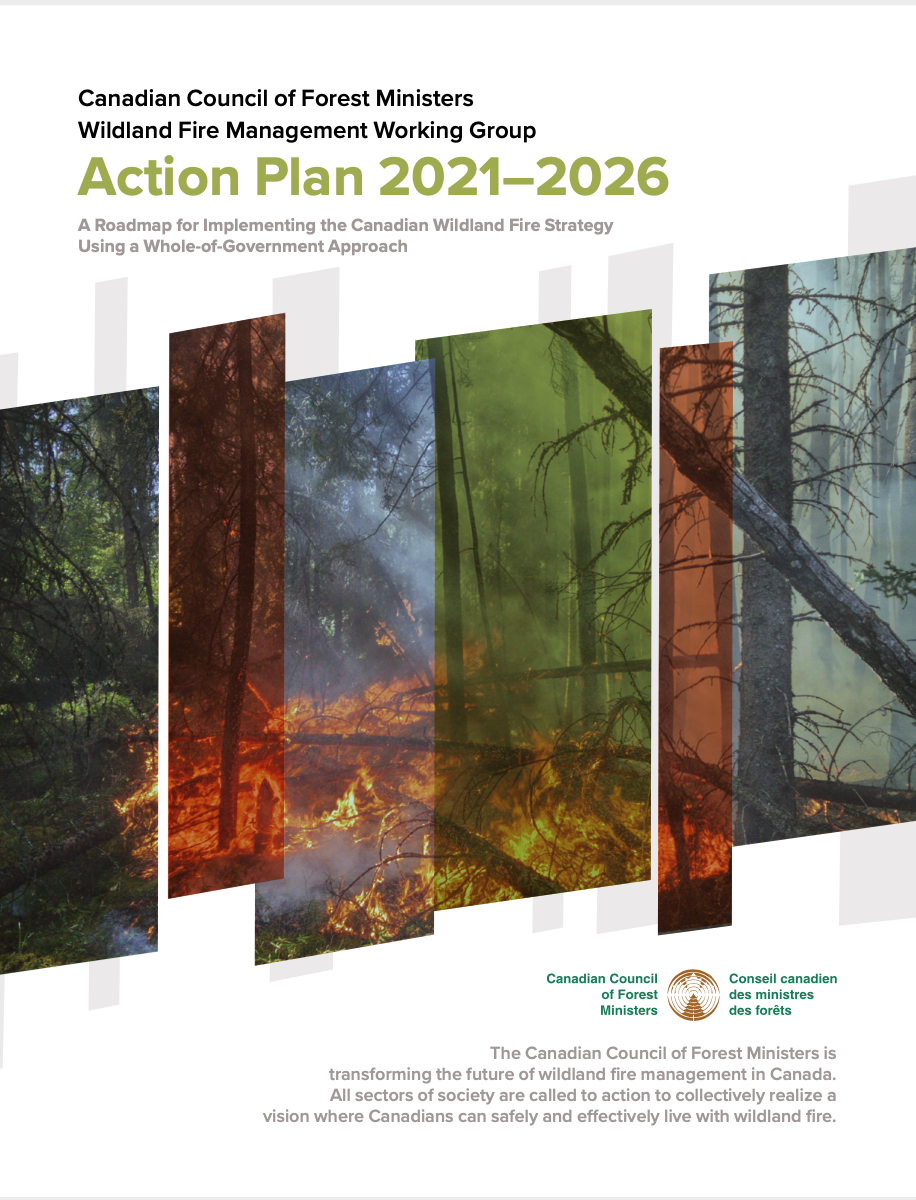Wildland Fire Management Working Group Action Plan 2021–2026

Executive Summary
This resource was submitted by the Climate Risk Institute for theCanAdapt Climate Change Adaptation Community of Practice.
This article is an abridged version of the original text, which can be downloaded from the right-hand column. Please access the original text for more detail, research purposes, full references, or to quote text.
The Canadian Council of Forest Ministers (CCFM), representing the federal, provincial and territorial governments responsible for forestry and/or wildland fire management, recognizes wildland fires as a critical issue for Canadians. The original Canadian Wildland Fire Strategy (2006) highlighted the emerging trends and conditions contributing to increased wildland fire threat and risk including climate change, community and resource expansion into wildland areas, and declining forest health. When the Canadian Wildland Fire Strategy was renewed in 2016, these trends were found to be accelerating faster than anticipated. Canada now regularly experiences large, catastrophic wildland fire events, placing Canadian lives and livelihoods at risk.
The Wildland Fire Management Working Group (WFMWG), comprising senior level officials from the federal, provincial, and territorial wildland fire management agencies, collaborated on the development of this Action Plan to enhance Canada’s resilience to wildland fire by continuing to implement the renewed Canadian Wildland Fire Strategy (2016) as a collective effort, seeking to mobilize all sectors of society.
Purpose
This Action Plan details the steps to achieve a bold, new future for wildland fire management in Canada: by 2030, communities and infrastructure across Canada will be more resilient to the threat and impacts of wildland fire. This will be achieved by transforming the focus of wildland fire management from forestry centric to a whole-of-society perspective in which
all orders of government, Indigenous peoples, all sectors and individuals can participate and coordinate efforts to effectively live with wildland fire through prevention, mitigation, preparedness, response and recovery.
This document articulates a shared vision and collective commitment to wildland fire resiliency on behalf of the Wildland Fire Management Working Group, while allowing for each jurisdiction to tailor their individual contributions based on their distinctive needs.
Using this Plan
Every Province and Territory has unique needs and differing priorities. As such, this Action Plan has been developed to provide the strategic direction for a comprehensive set of actions that can be enacted, in whole or in part, to collectively reduce wildfire risk and threat across the country. Each provincial, territorial and federal government will be responsible for implementing appropriate actions within their respective jurisdictions and will share information with other governments on these actions.
The key drivers leading to more frequent and severe wildfires are complex. Collective action is required by all orders of government, sectors and individuals to increase our resil- ience to wildland fires. No one agency or initiative will be successful if operating in isolation. The Canadian Council of Forest Ministers is calling to action all sectors of society to partic- ipate in this transformation. All orders of government, Indigenous peoples, all sectors and individuals are invited to explore the plan and collaborate on activities that may be scaled to address their circumstances.
(0) Comments
There is no content